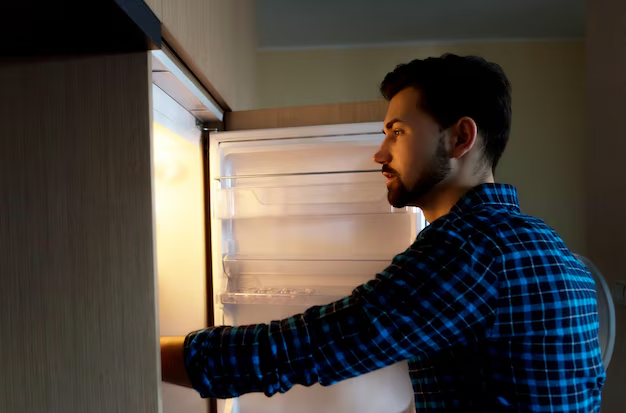Common Reasons Your Refrigerator Might Stop Cooling—and What You Can Do About It
Picture this: you reach into your refrigerator for a cold beverage or to prepare a meal, only to discover that everything inside feels warm. 😨 It’s one of those dreaded household moments. But before you panic, let’s explore why your trusty refrigerator might have suddenly stopped cooling. From minor malfunctions to routine maintenance issues, we’ll walk through the why and the how of tackling this common household problem.
Understanding the Refrigerator’s Cooling Cycle
How Refrigerators Work
At its core, a refrigerator’s primary function is to move heat from the inside out, keeping food chilled. Most modern refrigerators use a cycle involving a compressor, condenser coils, evaporator coils, and refrigerant to achieve this. Here’s a simple breakdown:
- Compressor: Compresses the refrigerant, raising its temperature and pressure.
- Condenser Coils: Located at the back or underneath, these help dissipate heat.
- Evaporator Coils: Located inside the refrigerator, they absorb warmth, contributing to the cooling effect.
- Refrigerant: Cycles through this system, changing from liquid to gas and back, transferring heat effectively.
Why This Matters
Understanding this basic operation shows that numerous components must function properly to keep your refrigerator cool. If one or more of these components fails, your refrigerator could stop cooling efficiently.
Common Culprits for Cooling Failure
Power Supply Issues
Loss of Power: Before jumping to conclusions, check if the refrigerator is plugged in and that there is no tripped circuit breaker. Sometimes, the simplest issues are the most overlooked.
Power Fluctuations: Repeated power surges or outages could damage internal components. Using a surge protector designed for large appliances can help prevent future damage.
Thermostat and Settings
Incorrect Thermostat Setting: The thermostat inside your refrigerator allows you to set the desired temperature. Whether it was accidentally adjusted or needs recalibration, an incorrect setting could lead to improper cooling.
Faulty Thermostat: Sometimes, the thermostat itself can malfunction, sending incorrect signals to the compressor, meaning the fridge won’t know when to cool or stop.
Blocked Vents and Airflow
Both refrigerators and freezers rely heavily on proper air circulation. Vents should be clear so cold air can circulate:
- Blocked Air Vents: Ensure that no food items are blocking the air vents inside. Proper spacing allows airflow crucial for consistent cooling.
- Dirty Coils: Condenser coils can gather dust and debris. Ensure these coils are clean to maintain efficient cooling.
Faulty Components
Refrigerators, like any machine, have various internal components that can wear out over time:
- Malfunctioning Compressor: The compressor does the heavy lifting in cooling. If it’s having issues, you might notice loud noises or no cooling.
- Evaporator Fan Issues: This fan moves air across the evaporator coils. If it’s defective, it can’t distribute cold air properly.
- Damaged Door Gaskets: A refrigerator door’s seal must be airtight. Damaged or worn gaskets let warm air in, hindering cooling.
Refrigerant Levels
Refrigerant Leaks: While uncommon, leaks can occur. Often indicated by a slight chemical smell, these leaks prevent proper heat transfer, resulting in inefficiency.
Practical Steps to Diagnose and Fix Cooling Issues
Initial Checks 🛠️
- Verify Power Supply: Confirm that the unit is plugged in and that the outlet is working.
- Reset Thermostat Settings: Adjust to the recommended settings. Usually around 37°F for the fridge and 0°F for the freezer.
- Inspect Vents and Coils: Ensure vents are unobstructed and clean the coils with a vacuum or brush.
More In-depth Inspection
- Listen for Unusual Noises: Unnatural sounds might indicate compressor or fan issues.
- Check Door Gaskets: Close a piece of paper in the door. If it slides out easily, the gasket might need replacing.
When to Call a Professional
If initial troubleshooting doesn’t resolve the issue, it might be time to call in a professional. They can:
- Diagnose refrigerant levels and repair leaks.
- Evaluate and replace faulty electrical components.
- Ensure the overall operational health of your appliance.
Maintaining Refrigerator Health for Longevity
Investing time in regular maintenance can extend your refrigerator's lifespan and efficiency. Here are strategies to practice:
- Routine Coil Cleaning: Every six months, clean the condenser coils.
- Gasket Inspection: Check door seals regularly and clean them to ensure they are tight and functional.
- Clear Clutter: Keep vents inside the fridge free of obstructions.
- Mindful Loading and Unloading: Quickly retrieve food items to maintain internal temperatures.
Visual Summary: Refrigerator Cooling Checklist ⚡
- 📌 Power: Ensure the unit is plugged in and receiving electricity.
- 🎛️ Settings: Correct thermostat settings; adjust if incorrect.
- 🍃 Airflow: Inspect vents and clean coils for obstruction.
- ⚙️ Components: Listen for noise, check fans and compressors.
- 🧊 Seals: Verify airtight door gaskets.
- 🛎️ Professional Help: Seek expert assistance when DIY checks prove insufficient.
Your refrigerator is a staple of modern convenience. Understanding why it might stop cooling empowers you to respond effectively. Whether it’s a quick fix or requires professional attention, keeping this essential appliance in top shape helps ensure that your perishable goods remain safe and fresh. Remember, a bit of ongoing maintenance goes a long way in preventing more significant issues down the line. 🌟
